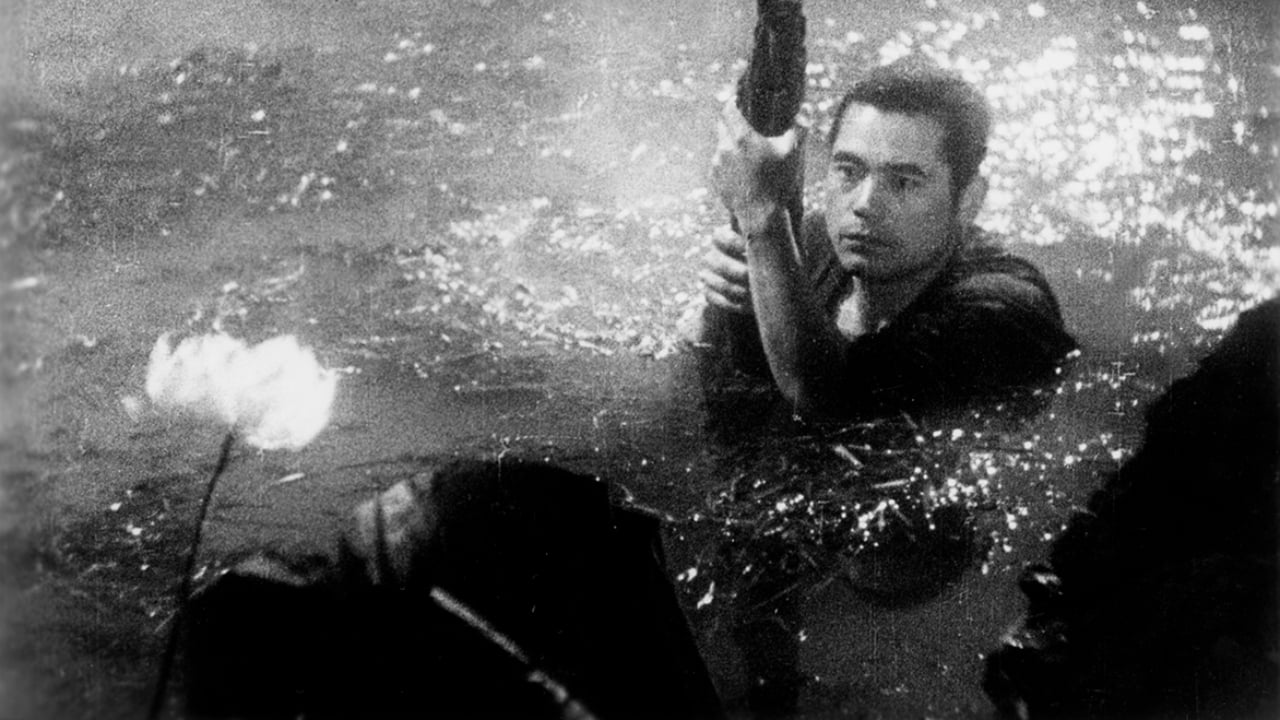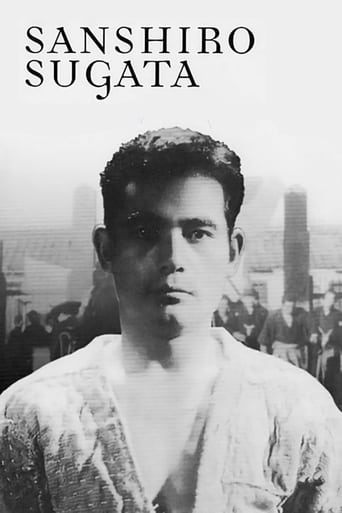



The Worst Film Ever
Instead, you get a movie that's enjoyable enough, but leaves you feeling like it could have been much, much more.
View MoreThis is a must-see and one of the best documentaries - and films - of this year.
View MoreThere is, somehow, an interesting story here, as well as some good acting. There are also some good scenes
View MoreKurosawa's debut features a few cinematic flourishes which hint at things to come in his later works, including the confident use of symbolism and of the forces of nature (particularly wind and rain). For a first-time director, it's clear there is an artistic vision and creative talent at work here.Despite this, the plot does feel rather slight and even conventional, probably due to the influence Western cinema had on Kurosawa at the time. Wartime budget constraints and heavy governmental censoring didn't help this film, and as such, it doesn't feel completely satisfying, particularly when seen next to the works of fellow Japanese contemporary Ozu Yasujiro, or indeed Kurosawa's later career.
View MoreAkira Kurosawa is widely known as one of the twentieth century's greatest directors, responsible for masterpieces like Rashoman, Ikiru, and The Seven Samurai. But every director must begin somewhere. John Ford got his start on B-westerns. Steven Spielberg began with Duel, the story of a man being chased down a desolate stretch of highway by a homicidal big-rig trucker. And Kurosawa started with that most Asian of genre films, the martial arts movie.Sanshiro Sugata (subtitled Judo Saga) tells the story of a young man who seeks to learn jujitsu, but upon seeing his prospective sensei thwarted in an attack on a rival instructor chooses to follow this man and his new art of judo. Don't expect any nefarious plots by criminal syndicates with innocent lives hanging in the balance. Sanshiro Sugata is more like an American boxing film in that it focuses mainly on the hero's personal development and his rise to become a great fighter.And rather than the flying kicks and fists of fury that characterize modern entries in the genre, this movie uses pure judo and jujitsu, which consists of the combatants struggling shoulder to shoulder seeking to throw the other, with only the occasional block or leg-sweep. The fighting here is simple but authentic, and fairly well staged. In between the fights, we see Sanshiro train, develop a budding romance, and learn that a warrior's spirit is as important as his skill. There is of course a villain, instantly recognizable as such because of his resemblance to Snidely Whiplash, and of course they fight before it's all over.I must confess that the villain is never given much characterization, nor is his hatred for Sanshiro explained. More interesting is Murai, an aging jujitsu master who faces Sanshiro in the annual police tournament. He is fighting for the honor of his dojo, and to make his daughter proud. Their match, pitting Murai's skill and experience against Sanshiro's strength and agility was the movie's high point for me.The film's low budget does show at times, mainly in the set pieces and the low quality of the night shooting. More seriously, the significance of some scenes isn't clear, and others felt like they should have been developed further, such as when the daughter of a fallen rival seeks vengeance on the hero. However, this may be due to the fact that wartime authorities cut a great deal of footage, most of which was never recovered.Sanshiro Sugata is a long way from the kind of movies Kurosawa would be making just a few short years later, but it's not bad for a debut film, and there are signs of the greatness he would later achieve.
View MoreFrom the very first shot of this very first Kurosawa film, you know you are in good hands. What seems like a standard moving shot is revealed to be the subjective viewpoint of the future hero, Sugata. From here, the film proceeds at a fast clip (aided by some crude chopping done by contemporary censors) to set what proved to be the blueprint for the Asian action flick. And frankly, few future films have improved on it. Kurosawas imaginative camera work and brilliant editing keeps the whole thing very watchable and the subtlety of the character development is still well in advance of the typical modern action film. The famous scene where Sugata finds himself stuck in a muddy pond, trying to find some sort of enlightenment is still fascinating and beautiful. And typically, the film ends with an amazing fight scene - the fight choreography might be primitive by todays standards, but the glorious moonlit mountain top scenery is still thrilling - its been imitated numerous times, but why watch the imitators when the original is still best? You can of course say this about pretty much any Kurosawa film.I saw this on the Australian Mad Men DVD. The print quality is pretty poor and the translation isn't great. And it would have been nice if they had done more work to reconstruct the original cut - some deleted scenes are added as extras. I suspect the original Kurosawa cut was much better, sadly, we may never see it.
View MoreThere were many reasons I was unimpressed by this film, though one had was certainly not the fault of anyone connected with the movie. Because this and its sequel are rarely seen, they are hard to come by. I finally found them as an import from MEI AH Laser Disc Company--and boy did THAT leave a lot to be desired. The quality of the print was very poor (though MUCH worse on the sequel) and the captioning was beyond abominable! When my daughter saw part of it, she immediately recognized the problem. It seems that many Japanese movies are released by Chinese companies, so the movie is translated from Japanese to Chinese and finally to English--and so much was lost in the translation it practically ruined the experience. For example, "JUDO" is translated as either "Karate" or "Kung Fu" in the movie. If you don't know much about martial arts, there is a world of difference between them. For two movies about Judo, the word NEVER appears in the subtitled version! Also, countless sentences simply make no sense--it's as if the words are almost random at times.Now, as far as the movie itself goes, this is a purely ordinary film with very little of the magic of later Kurasawa films. It is a not particularly involving movie about a judo master. Some of the cinematography and acting is very good and at other times it isn't--it's obvious Kurasawa is still learning his craft. Also, part one is ruined by the fact that part two is a worse film in most ways-- so the viewer never really gets a payoff for seeing the conclusion.
View More